
Pig
Pig
Pig
Pigs are very famous animals that everyone knows, with their curly tails and large noses. Pigs are very familiar animals, but surprisingly, many people have never seen them up close. Once you know the secret of pigs, you may be able to see them differently when you meet them at the ranch or zoo. Now let's take a sneak peek at what characteristics and secrets pigs have!
Pig Basic Infomation
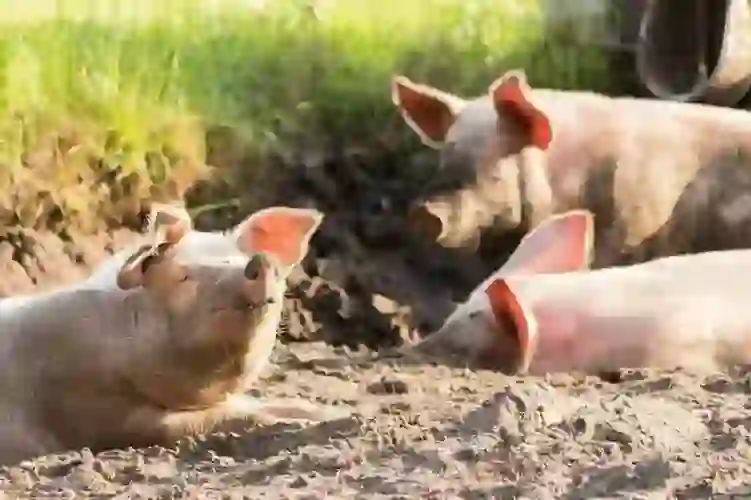
Mammalia-Cetartiodactyla-Suidae-Boar genus.
Large yorkshire weight:male 370Kg female 340Kg. Landrace pig weight:male 330Kg female 270Kg.
Pigs are domesticated animals from wild boars and do not live in the wild.The ancestors of pigs, wild boars, are animals that live widely from Europe to Asia, and we humans have been catching wild boars and eating their meat since ancient times.
However, our ancestors wanted more meat in a stable and plentiful way, so they started keeping wild boars that they caught about 10,000 years ago.
It seems that people all over the world thought the same thing, and there are still traces of wild boar domestication in Europe, West Asia, and China.
Pigs and wild boars are basically animals that live in flocks of several animals, mainly mothers and their children.In the case of wild boars, males leave the herd and live alone after about a year of birth, and during the breeding season, they roam the mountains looking for females.
Pigs do not have a fixed breeding season, and can become pregnant and give birth throughout the year. The gestation period is about 114 days, and each birth produces about 10 children.
On the other hand, the breeding season of wild boars is limited to spring and summer, and the gestation period is about 114 days, the same as that of pigs, and each birth produces about five offspring.
Pigs and wild boars are omnivorous animals that eat basically anything.
Pigs in captivity eat special feed called compound feed, which is made by adding vitamins and minerals necessary for pig growth to the main ingredients such as corn, soybean meal, and wheat bran.
Wild boars eat all kinds of things, including leaves, roots, fruits, seeds, insects, and frogs.
Pigs are often kept for their meat, but they can also be kept as pets.
Pigs that are kept as pets are called "mini-pigs" or "micro-pigs" both of which are characterized by the fact that they do not grow as large as pigs for meat.
A pig for meat can weigh about 200-300 kg, but a mini pig can weigh about 50 kg as an adult, and a micro pig can only weigh about 40 kg as an adult.
Pigs are known to be very intelligent and are said to be as smart or smarter than dogs. Because of their cleverness and cuteness, more and more people are keeping pigs as pets in recent years.
※About mini-pigs and micro-pigs. There are varieties of mini-pigs such as "goettingen minipig" and "potbelly", but in fact, there is no such variety of micro-pigs.
Micropig breeders seem to refer to pigs with particularly small bodies as micropigs, but so far there is no clear definition of micropigs.
When keeping pigs, use mini-pig pellets as a staple food and give vegetables and fruits as a side dish.
One thing to keep in mind is that you should not give pig feed for meat (compound feed) to pigs you keep as pets.
This is because compound feed is designed to get a lot of meat quickly, so it is not suitable for pet pigs that want to live a long life without gaining too much weight.
Pigs have a tremendous appetite and want to eat a lot of food. However, if you feed them a lot just because they are cute, they will gain weight in no time and grow bigger and bigger.
Overweight can also cause illness, so be sure to give a set amount of pellets. In order to shorten the time when you are hungry as much as possible, it is best to divide the food into several portions a day and give small amounts at a time.
When you are hungry, you may start to make a fuss, but in such cases, a little vegetables or fruits (low in calories and high in fiber and water) will calm you down.
Pigs can be kept indoors or outdoors, but many people keep them indoors. When kept indoors, keep it in a cage for medium to large dogs, and when kept outdoors, keep it in a kennel where it can withstand the rain and wind.
Either way, pigs are powerful and surprisingly dexterous, so it is best to prepare a cage or hut that is as strong as possible.
Since pigs are originally animals that live in packs, they tend not to be good at spending time alone. If there is a high possibility that you will be away from home for a long time, it is better to welcome multiple horses from the beginning.
Pigs are animals that love to eat and will try to eat anything that goes in their mouths. However, just like dogs and cats, there are some things that should not be fed, such as raw onions and potato sprouts.
And before you get a pig, it is important to find out what foods you should and should not give to pigs. Also, please know that no matter what kind of pig it is, it is almost the same size as a piglet.
In other countries, there has been an amazing case where a piglet was taken in thinking it was a mini-pig, but it was actually a meat pig that grew so large that it weighed over 200 kg after growing. When picking up a mini-pig or micro-pig, be sure to pick it up from a reliable breeder or pet store.
Pig Q&A

Pigs can also be kept as pets.
Pigs are often kept for their meat, but they can also be kept as pets.
Pigs that are kept as pets are called "mini-pigs" or "micro-pigs" both of which are characterized by the fact that they do not grow as large as pigs for meat.
A pig for meat can weigh about 200-300 kg, but a mini pig can weigh about 50 kg as an adult, and a micro pig can only weigh about 40 kg as an adult.
Pigs are known to be very intelligent and are said to be as smart or smarter than dogs. Because of their cleverness and cuteness, more and more people are keeping pigs as pets in recent years.
※About mini-pigs and micro-pigs. There are varieties of mini-pigs such as "goettingen minipig" and "potbelly", but in fact, there is no such variety of micro-pigs.
Micropig breeders seem to refer to pigs with particularly small bodies as micropigs, but so far there is no clear definition of micropigs.

What should I give a pig when I keep it at home?
When keeping pigs, use mini-pig pellets as a staple food and give vegetables and fruits as a side dish.
One thing to keep in mind is that you should not give pig feed for meat (compound feed) to pigs you keep as pets.
This is because compound feed is designed to get a lot of meat quickly, so it is not suitable for pet pigs that want to live a long life without gaining too much weight.
Pigs have a tremendous appetite and want to eat a lot of food. However, if you feed them a lot just because they are cute, they will gain weight in no time and grow bigger and bigger.
Overweight can also cause illness, so be sure to give a set amount of pellets. In order to shorten the time when you are hungry as much as possible, it is best to divide the food into several portions a day and give small amounts at a time.
When you are hungry, you may start to make a fuss, but in such cases, a little vegetables or fruits (low in calories and high in fiber and water) will calm you down.
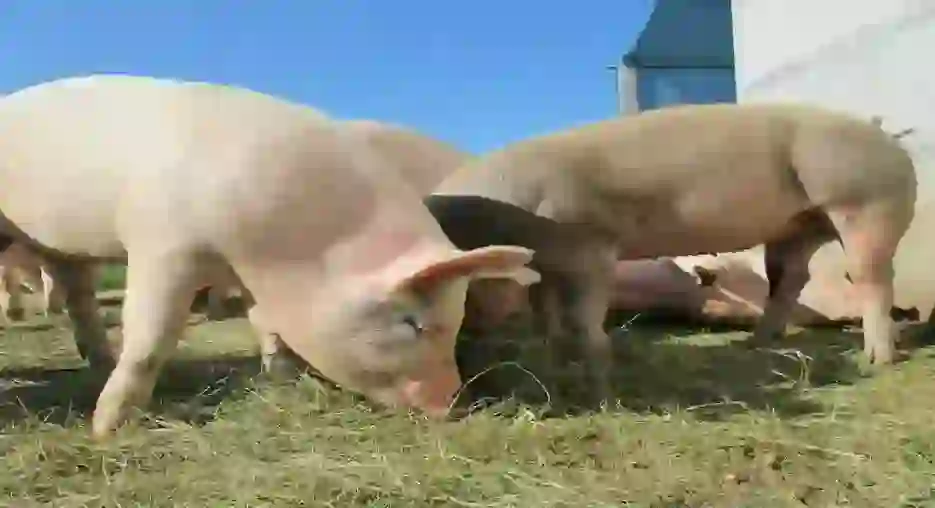
Rearing environment of pigs.
Pigs can be kept indoors or outdoors, but many people keep them indoors. When kept indoors, keep it in a cage for medium to large dogs, and when kept outdoors, keep it in a kennel where it can withstand the rain and wind.
Either way, pigs are powerful and surprisingly dexterous, so it is best to prepare a cage or hut that is as strong as possible.
Since pigs are originally animals that live in packs, they tend not to be good at spending time alone. If there is a high possibility that you will be away from home for a long time, it is better to welcome multiple horses from the beginning.
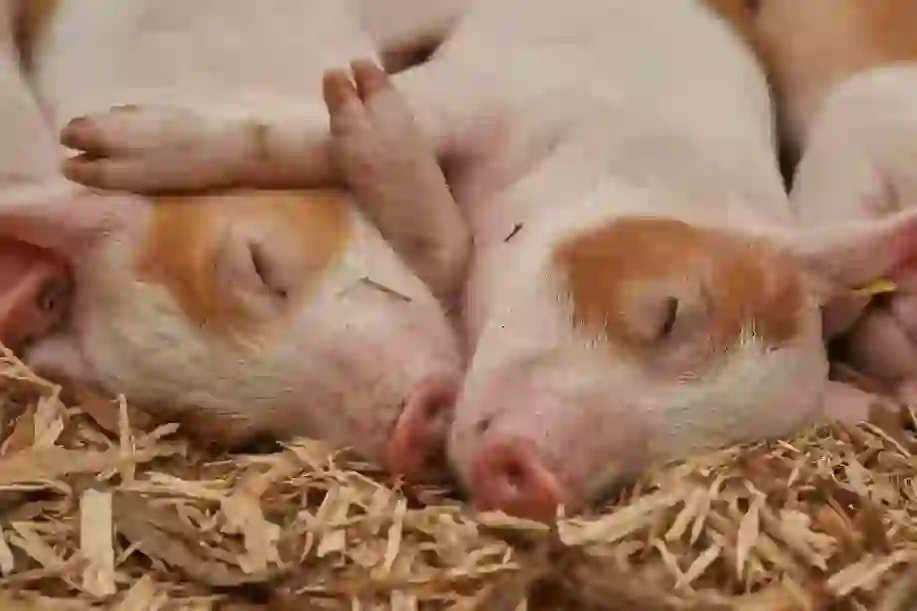
Other notes.
Pigs are animals that love to eat and will try to eat anything that goes in their mouths. However, just like dogs and cats, there are some things that should not be fed, such as raw onions and potato sprouts.
And before you get a pig, it is important to find out what foods you should and should not give to pigs. Also, please know that no matter what kind of pig it is, it is almost the same size as a piglet.
In other countries, there has been an amazing case where a piglet was taken in thinking it was a mini-pig, but it was actually a meat pig that grew so large that it weighed over 200 kg after growing. When picking up a mini-pig or micro-pig, be sure to pick it up from a reliable breeder or pet store.

What is the origin of the pig's name?
It is called "pig" in English and "buta" in Japanese, but this time I would like to introduce the origin of the name "buta" in Japanese.
However actually the history and origin of the name "pig" is not clearly known.
However, it is thought that the origin of this name is probably that in addition to the pig's cry of "boo-boo" in Japanese, it was also called "futoi" or "buttoi" because of its roundly fat appearance.
As a result of the gradual change in the way these are called, the name "buta" seems to have come to be used.
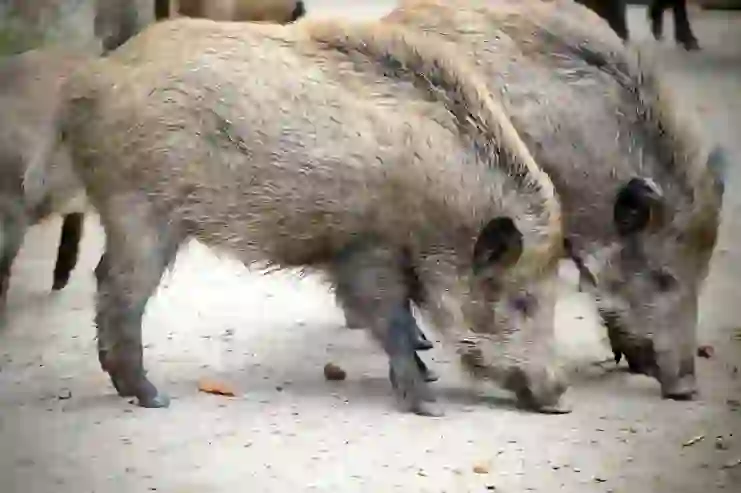
What is the difference between a pig and a wild boar?
I explained earlier that pigs are animals that have been domesticated from wild boars, but what are the differences between pigs and wild boars?
The pig's body hair is hard to the touch, and the coat color can be white (pale pink), black, brown, or brown. Because of the improvement to get more meat, the head is smaller than the boar, but on the contrary, the buttocks and thighs are larger than the boar.
It is also known to grow up faster than wild boars, weighing over 100 kg in about six months of life.
Like pigs, wild boars are covered with hard body hair too. And their coat color can be brown or brownish brown. Because they run around mountains and fields, the front half of their bodies, including their heads, are larger than pigs.
They also grow slower than pigs, and finally weigh almost 90 kg after more than a year of age.
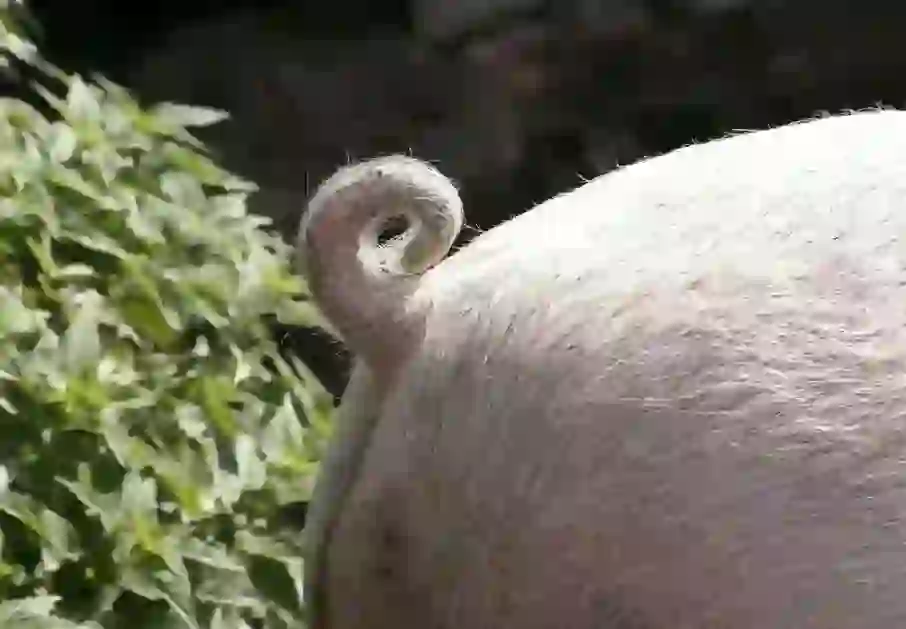
Are there wild boars in Japan?
In Japan, there are two types of wild boars the "japanese wild boar" and the "ryukyu wild boar". There is no evidence that either of these pigs has been domesticated, and it is said that pigs such as "agu" that have been kept in Japan for a long time originated from pigs that came from China.
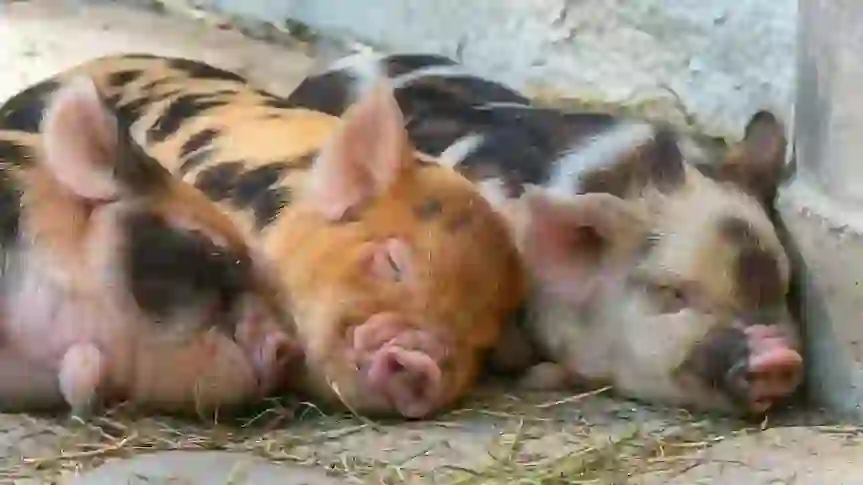
Why is a pig's tail curled?
"Draw me a picture of a pig's tail".If you ask me to do so, I think most people would draw a wrapped tail. So why is the pig's tail curled?
In fact, the reason why the pig's tail is curled is still unclear.
However, considering that wild boars, the ancestors of pigs, did not have rounded tails, it is thought that they eventually curled up during the process of becoming livestock.
By the way, the tail of a pig with energy is rolled upward, and when it is in a good mood, it swings its tail, and when it is relaxed or not energetic, it hangs its tail straight.
Also, pigs that are kept for meat basically cut off their tails as soon as they are born. This is because pigs are curious animals, and when they see a long, wobbly tail in front of them, they may bite into it.
If a pig that is kept for meat is bitten off its tail, it may get bacteria from it and get sick, so it often cuts off its tail first.
This process, called tail cutting, may seem pitiful, but it is necessary to protect the health of pigs.
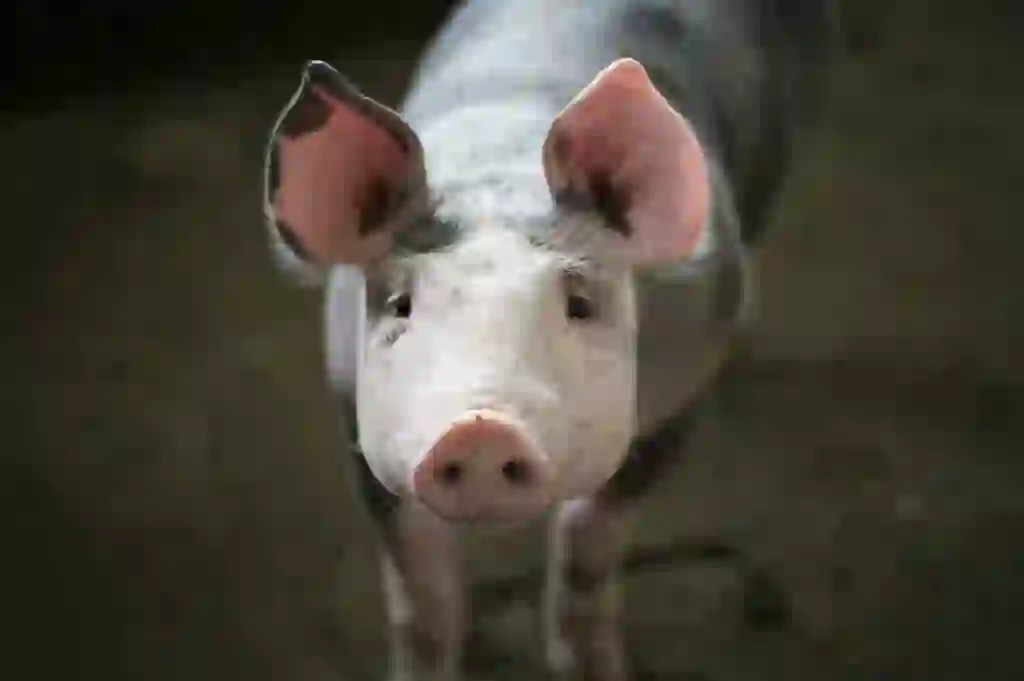
Is it true that pigs like to be clean?
It's true.
Maybe some people have an image of pigs as dirty, unsanitary and smelly.
However, pigs are naturally neat and tidy, and are animals that properly separate the toilet from the sleeping area. If you have enough space, your pig won't sleep in the bathroom. If you keep them as pets, you can use this habit to potty train them. However, the amount of poop and pee is too much, so you need to change your pet sheets frequently.
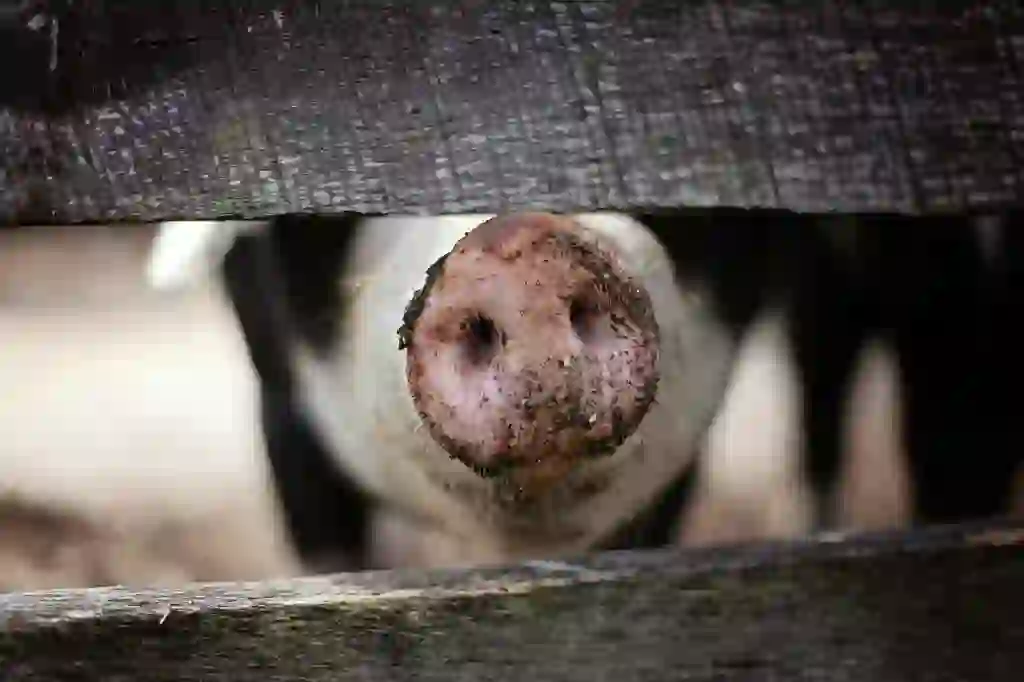
What does a pig sound like?
Pigs are always chirping in a "oink oink" voice, as we imagine.
However, when they feel threatened or have a bad day, they squeal loudly as if they were shouting. The pig's screeching sounds very good, so if you've never heard it before, you might be surprised.
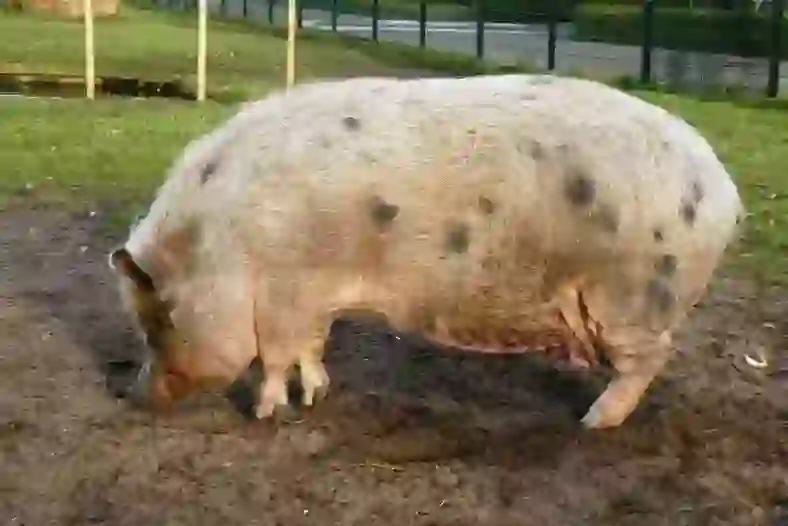
Do pigs have a good nose?
Pigs have a very good nose, and their sense of smell is said to be 100 times greater than that of humans. In the past, pigs were active as animals that used their sense of smell to find truffles, one of the world's three greatest delicacies in luxury foods.
However, pigs tend to eat the truffles they find, so now dogs, not pigs, often work to find truffles. Also, if you unravel the old records, you will find that some pigs were working to find drugs at customs.
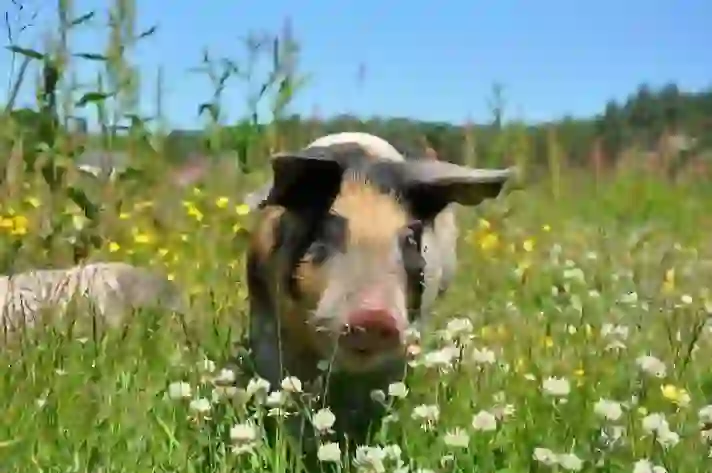
Is it true that pigs are very powerful?
It's true. Pigs are very powerful, and large pigs can easily lift humans.Even mini pigs are strong enough that adults will fall if they are pushed up or lunged at with their noses as hard as they can.
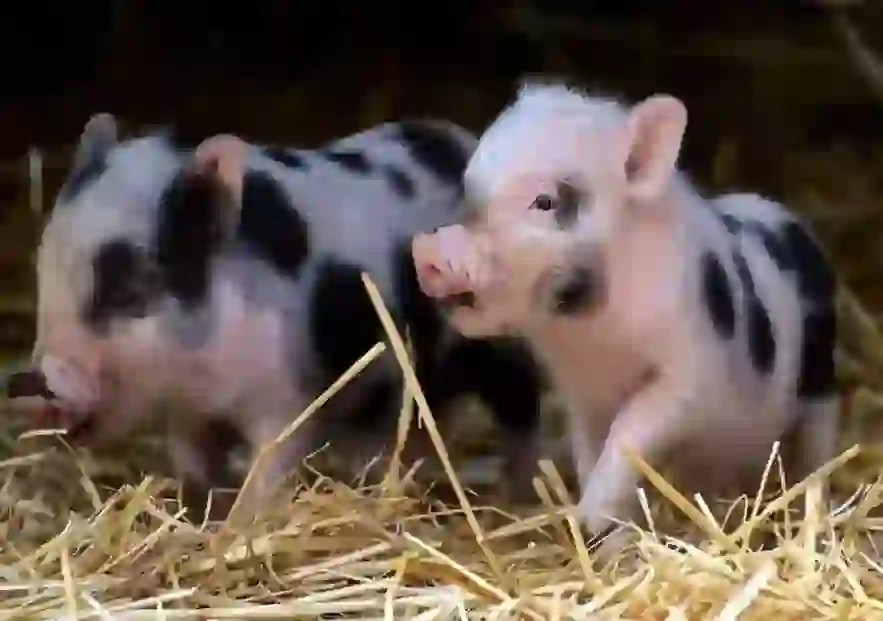
Can you hold a pig?
Pigs are basically not good at being held. Cats and dogs have a habit of being carried by their parents with their children's necks in their mouths. Therefore, in many cases, they do not mind being carried.
However, pigs do not have the habit of being carried by their parents with their children's necks in their mouths, so their feet do not leave the ground during normal life. As a result, they are not used to their feet moving away from the ground, and their feet float in the air in the same posture as when they are caught by a carnivore, so they are not good at cuddling.
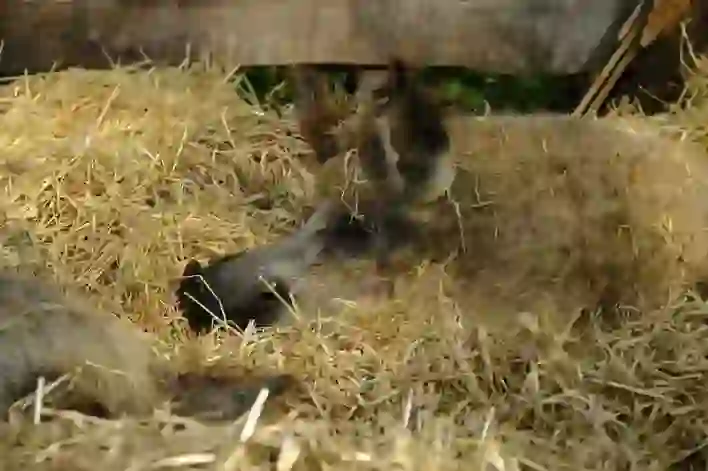
What do the miniature pigs at the zoo eat?
The miniature pigs that live in the zoo eat pellets for herbivores, pastures such as timothy, vegetables (cabbage and carrots), and fruits (apples, oranges, bananas).
Some zoos offer a petting experience where you can touch and feed the mini-pigs.

Is it true that there is a pig designated as a national treasure?
It's true.
In Hungary, there is a mysterious pig with fluffy hair called "mangalitsa".
Mangalitsa is not a common formula feed, but is grown slowly and over time while feeding pumpkins and acorns. This is why the fat in the meat is said to be very high quality and delicious.
For a while, the number of such mangalitsa decreased so much that it was designated as a national treasure to prevent its extinction. Now that it has been well protected and bred and is no longer endangered, it is valued as a very tasty "edible national treasure" in world.
Incidentally, in Spain, there is an "iberico pig" that is raised in the same way as mangalitsa.

Would you like to become a part of the 'Animalbook.jp'?
Turn your knowledge into Q&A and share it with the world. ※Publication will be activated after purchase. Let's share information together!
Pig Type of List
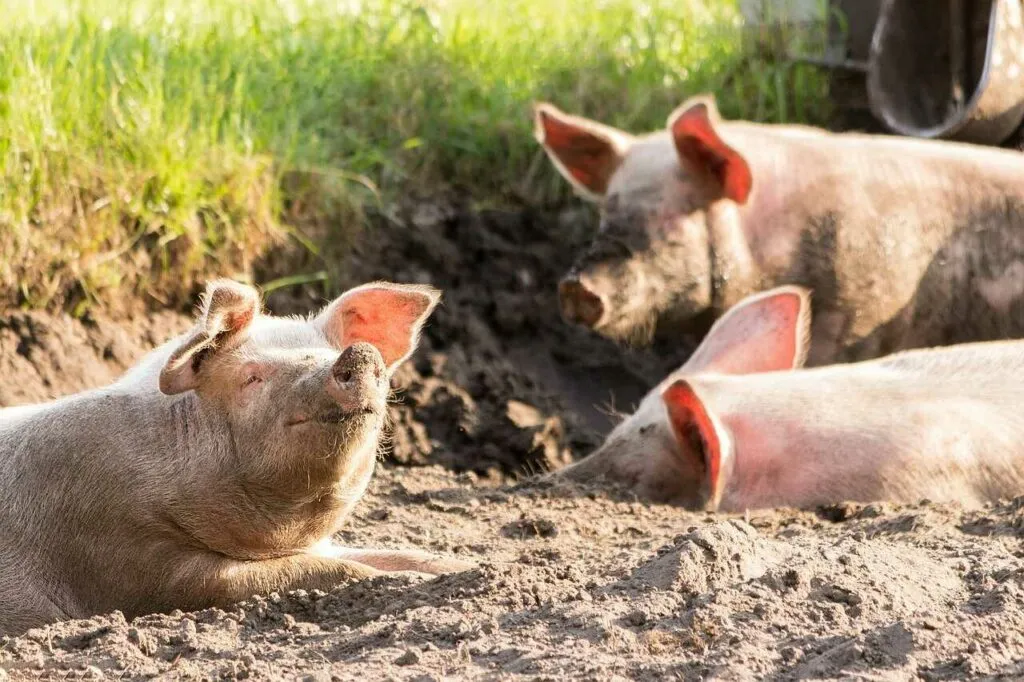
・Large Yorkshire ・Middle Yorkshire ・Landrace Pig ・Berkshire Pig ・Duroc Pig ・Hampshire Pig ・Mangalitsa ・Jinhua Pig ・Meishan Pig etc.
Information
Congratulations! You are the first commenter!

Create Your Favorite List!
Pig
Save the animals you love! Build your own list to quickly revisit your favorites later.

Would you like to leave a comment?
※Please note: This is for the purchase of rights to post comments within the article.
Find Your Favorites!
Our shop offers a unique and attractive selection of goods themed around various animals.
Pig References

- 田中 智夫(2019年)『アニマルサイエンス4 ブタの動物学』東京大学出版会
- (公社)茨城県畜産協会いばらきの畜産情報「家畜名の由来を探る」 http://ibaraki.lin.gr.jp/chikusan-ibaraki/25-09/08.html
- 株式会社埼玉種畜牧場 SAIBOKU「ぶたのしっぽ」 http://www.saiboku.co.jp/museum/college/seitai/seitai9.html
- 農林放送事業団アグリワールド「なるほど畜産情報豚のしっぽの話」 https://www.agriworld.or.jp/agriworld1/tikusan/chikusan/lint070206.html
- ナショナルジオグラフィック「小さなミニブタの大きな問題」 https://natgeo.nikkeibp.co.jp/nng/article/news/14/9823/
- 農研機構「イノシシの生態」 http://www.naro.affrc.go.jp/org/narc/chougai/ino-HP/ino-eco.htm
- 桐生が岡動物園「動物園の人気者(ブタ)」 http://www.city.kiryu.lg.jp/zoo/ninki/honyurui/1004730.html
- 株式会社協同インターナショナル「Pick(ピック)、マンガリッツア豚について」 https://www.kyodo-inc.co.jp/food/brand/pick/brandstory.html
Pig Introduction of media used
出典:https://pixabay.com/videos/id-49651/

出典:https://pixabay.com/images/id-4028140/

出典:https://pixabay.com/images/id-139712/

出典:https://pixabay.com/images/id-214350/
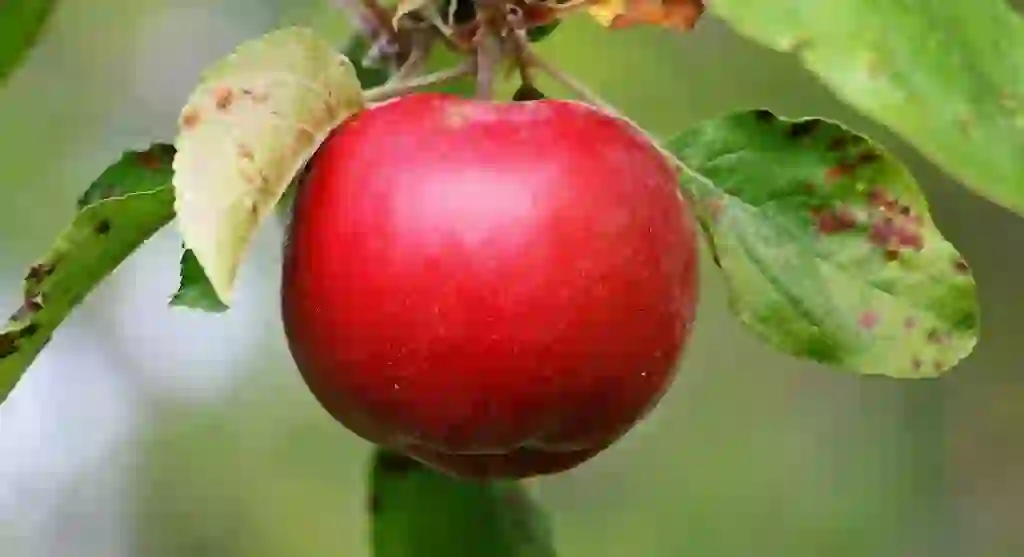
food
出典:https://pixabay.com/images/id-1539589/

出典:https://pixabay.com/images/id-3386356/

出典:https://pixabay.com/images/id-4124468/
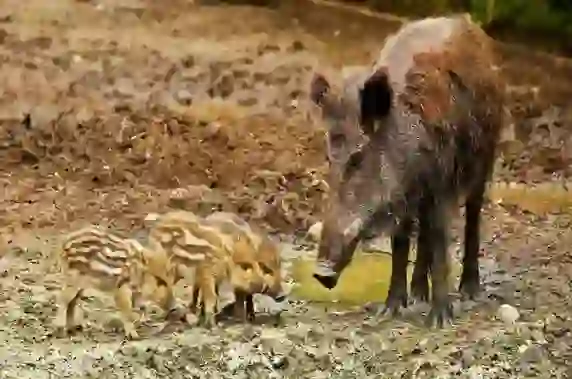
similar
出典:https://pixabay.com/images/id-3481646/

出典:https://pixabay.com/images/id-4787575/

出典:https://pixabay.com/images/id-1950151/

出典:https://pixabay.com/images/id-5240702/

出典:https://pixabay.com/images/id-2713066/

出典:https://pixabay.com/images/id-1867180/

出典:https://pixabay.com/images/id-4656388/

出典:https://pixabay.com/images/id-662008/

出典:https://pixabay.com/images/id-3279517/

出典:https://pixabay.com/images/id-2912449/

Help Enrich Our Animalbook.jp with Your Media!
We are constantly looking to expand and enrich our Animalbook.jp with amazing photos and videos of animals. If you have any media that you'd like to share, please contribute and help us showcase the beauty and diversity of the animal kingdom. Your submissions will be credited and featured in our encyclopedia, reaching a wide audience of animal lovers.


















